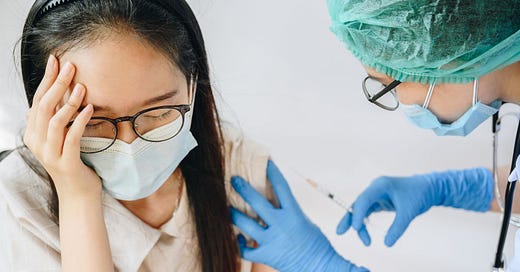FAQ Episode 15: Migraine Headaches and Steroid therapy in the ER: What it might mean for you.
FAQs for Natural Migraine Relief for Women
Hi! Jeff Baker here again as your physician host for Frequently Asked Questions about Natural Migraine Relief for Women. Today I’d like to look at a common tool used to treat acute migraines, and how response to it may tell us something about the cause of that migraine. For years the use of IV steroid therapy in the ER has been a management option in treating acute migraine headaches. If you have migraines, you have likely encountered an ER visit and possible injectable steroid therapy. A recent study (1) in the journal Neurology asked whether the relative dose of steroid given made a difference in relieving a migraine. I’d like to take that a step further and ask: “if a steroid injection made a difference: why? and what does the response mean about the root causes of a person’s migraine headaches?
This study included 209 patients, of whom 72% were women. From within this group, 34% of the group given low-dose dexamethasone (4 mg) dose achieved sustained headache relief, vs. 41% of those in the higher dose (16 mg) group. The study concluded that higher steroid doses did not confer significantly greater relief. I would add, not enough to merit taking four times the dosage.
Steroid therapy is aimed at reducing inflammation. We know that migraines are both initiated by inflammatory processes, as well as producing a post-migraine cascade of inflammation as a result of the headache itself. As noted in this study, acute ER steroid therapy could significantly reduce pre-headache root cause inflammation as well as that pushed forward by the migraine itself for slightly more than 1/3 of those patients. If you can break a vicious cycle of inflammation, you may be able to reduce repetitive migraine attacks.
Some take-home considerations based on this information include:
1. If you respond positively to ER steroid therapy, it suggests that you have one or more inflammatory root causes promoting your migraines.
2. If you don’t respond well to ER steroid therapy if doesn’t mean that you have no inflammatory components, but rather that either:
a) the other non-inflammatory root cause factors outweigh that of the inflammation and its benefit from steroid therapy (which means we should seek to find them) or
b) the inflammatory drive going on was too great to be relieved by ER steroids (of either dose) alone.
Whether you respond to steroids or not, knowing the root causes of your migraine is essential to developing a plan to manage them. This would be true whether we are looking for either pharmaceutical or non-drug “natural” therapy options. However, if you do respond to ER steroids, you should look more closely at migraine root factors that are driven by inflammation. In my online course “Natural Migraine Relief” I cover 10 major categories of migraine root causes, including inflammation, each with multiple subcategories. To give you an idea of the variety of potential factors involved, let’s review some of these inflammation-provoking categories. Some of the inflammatory factors that might provoke a migraine, and may be temporarily improved with steroid therapy could include:
-acute or chronic sinus congestion or infection
-reduced methylation of B vitamins (a genetically modified factor) and its associated inflammation. Up to 30% of Americans have some degree of this genetic expression.
-excess histamine production (or reduced histamine management capability). This can also be aggravated by food or airborne allergies.
-excess prostaglandin production, especially if your migraines happen just before or at the onset of your monthly period.
-provocation of endothelial hyperactivity (irritation of blood vessel lining), which can be provoked by specific foods, smoking, or an excess of prostaglandins as mentioned above.
-viral infections, especially those that are pro-inflammatory like COVID, RSV and influenza.
-food sensitivities and gut flora imbalance (which is a different problem from most ‘food triggers’). More extreme examples of this are Crohn’s disease and ulcerative colitis, which can overlap with migraines.
-multiple inflammatory factors provoking the trigeminovascular pathway (the nerves affecting sensory information from the facial area).
-excess iron stores can also provoke inflammation.
-multiple causes of dry eyes can have a provocative inflammatory influence as migraine root cause factors, as well.
If you have any of these issues, management specific to the root causes can lower the cumulative inflammatory insults that drive your migraine headaches.
For class members, you may remember that these issues are covered in detail in Lessons 7 & 8 of the Natural Migraine Relief course, along with specific therapy options outlined for you in the Migraine Action Plan portion of the course.
Among the 26 lessons in Natural Migraine Relief, we review in detail the other nine major root cause factors for migraine (besides inflammation) that are also keys to making this online course work for you.
To review the course content details see www.naturalmigrainerelief.online
References:
Randomized Trial Comparing Low- vs High-Dose IV Dexamethasone for Patients with Moderate to Severe Migraine W. Friedman, et.al. First published August 21, 2023, DOI: https://doi.org/10.1212/WNL.0000000000207648





